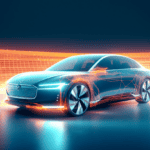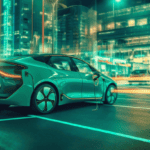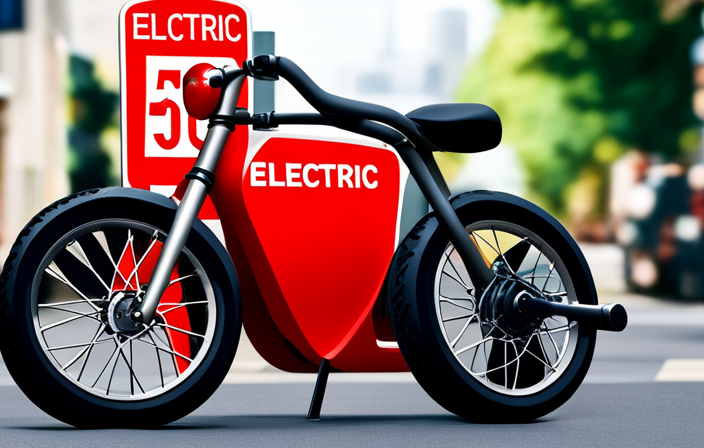Electric Vehicle
The Rise of Electric Vehicles: Driving Change in the Automotive Industry
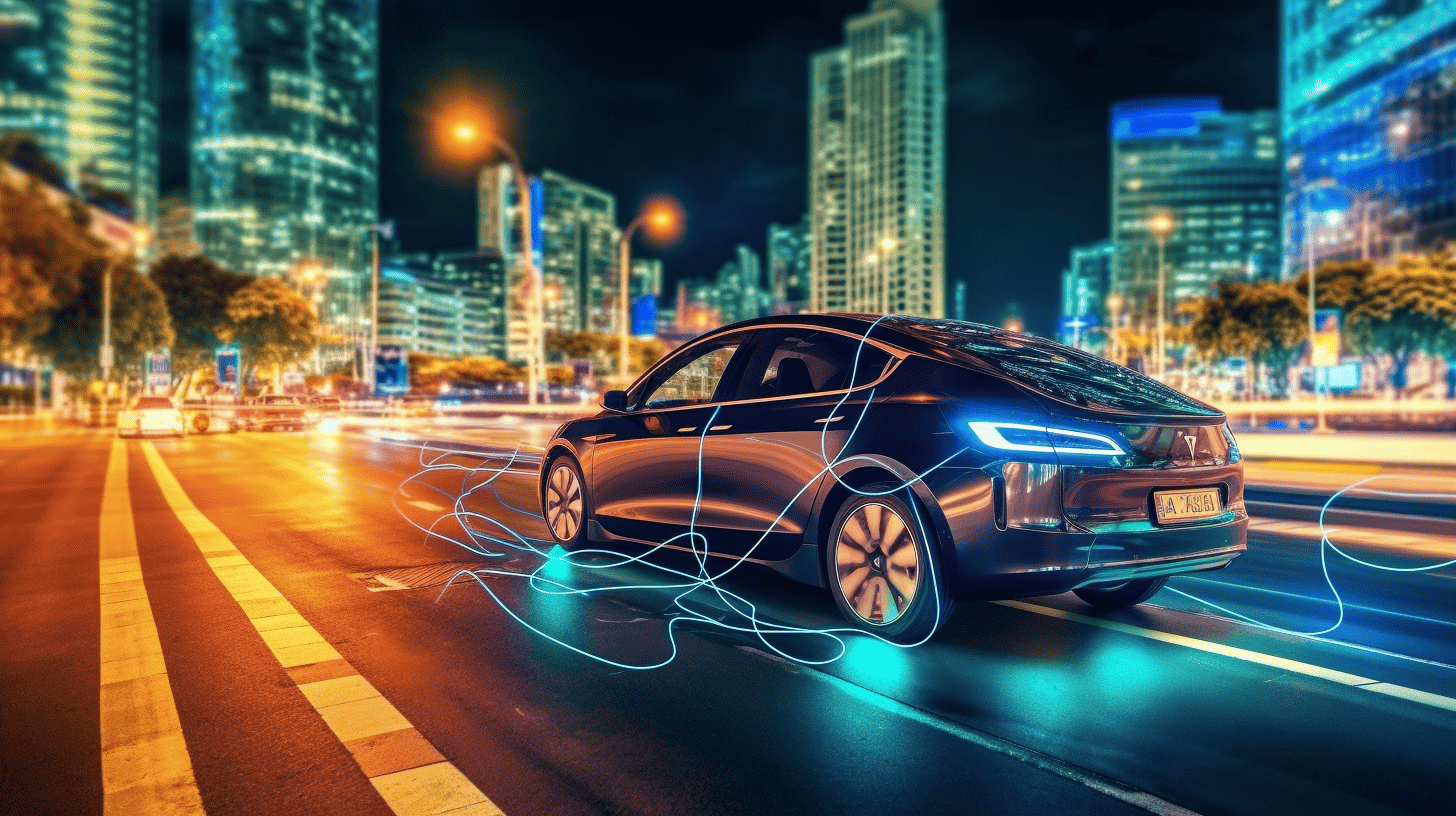
Electric vehicles (EVs) are growing in popularity among consumers because of their benefits to the environment and economy. An EV operates purely on electric power, usually by harnessing electricity stored within a battery pack or another form of energy storage device.
EVs are distinct from hybrid vehicles that combine both gas-powered and electric components. The definition of an EV encompasses a wide range of automobiles such as passenger cars, light commercial vans, two-wheelers, buses, trucks and trains.
The primary benefit of EVs compared to traditional gasoline-based vehicles is reduced emissions of air pollutants since they don’t require combustion engines for propulsion. This has significant positive implications for tackling climate change on local levels through improved air quality in cities as well as globally via fewer greenhouse gas emissions overall.
Additionally, EVs have lower fuel costs than conventional cars thanks to cheaper electricity rates compared to gasoline prices.
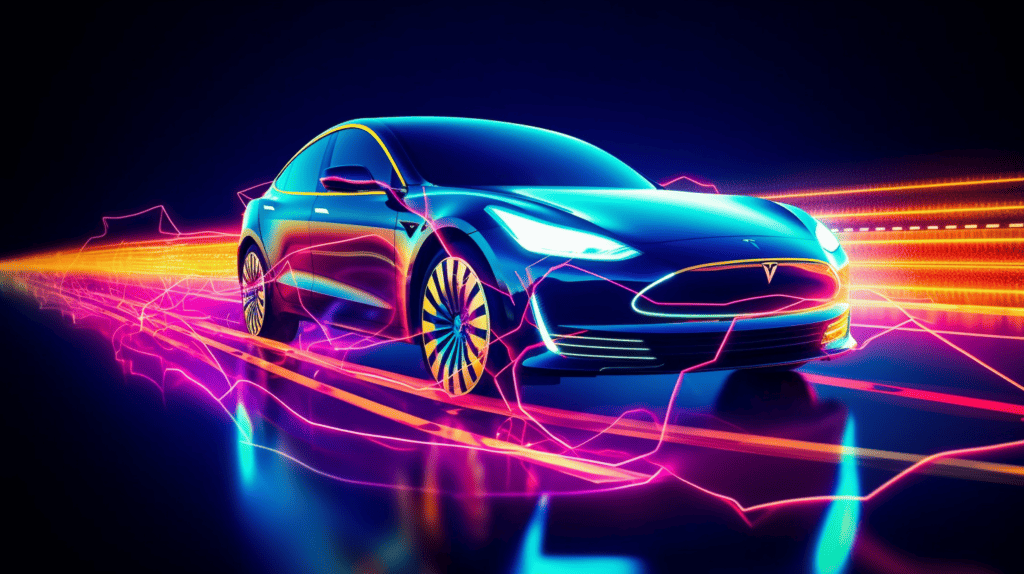
Given these advantages, governments around the world are taking steps to encourage adoption of EVs by providing incentives and programs designed to make them more accessible and affordable for individuals and businesses alike.
In this section we will provide an overview of some government policies currently being implemented to facilitate further uptake of EVs across various industries.
Overview Of Government Programs
Having established what electric vehicles are, the next step is to consider how government policies can promote their adoption.
Governments worldwide have implemented various programs and initiatives to encourage the use of electric vehicles and mitigate the cost associated with their purchase. These programs may include tax incentives, subsidies for purchasing an electric vehicle, or research grants for developing new technologies that could help increase demand for EVs.
In addition to these financial incentives, some governments have also adopted measures such as increasing access to charging infrastructure or providing discounts on parking fees for EV owners. In this way, they hope to encourage more people to make the switch from conventional gasoline-powered cars to electric vehicles.
The potential benefits of increased adoption of EVs go beyond simply reducing emissions. Electric vehicles can be quieter than traditional cars and require less maintenance – both factors which could lead to improved air quality in cities where traffic noise is a problem.
Furthermore, since electricity prices are generally lower than gas prices, adopting an EV could also translate into reduced costs for consumers over time. With so many potential advantages to using EVs, it’s easy to see why governments would want to incentivize their adoption through various policy instruments.
Tax Incentives And Subsidies
Tax incentives and subsidies are two government policies that have proven effective in promoting the adoption of electric vehicles. Tax incentives reduce the cost of purchasing an electric vehicle, making them more accessible to a broader range of consumers.
Subsidies also help lower costs by providing funding for research and development of new technologies associated with electric vehicles. By reducing the financial burden on purchasers, both tax incentives and subsidies can encourage people to switch from gasoline-powered cars to electric ones.
The benefits of these types of government policies go beyond just helping individuals save money. When there is an increase in electric vehicle demand due to affordability, manufacturers will be motivated to develop newer models at competitive prices.
This could result in increased production volumes, leading to greater economies of scale, further driving down costs and increasing accessibility even more. Additionally, when governments provide subsidies they create positive externalities such as environmental sustainability and economic growth through job creation within related industries like automotive manufacturing or energy generation.
Overall, tax incentives and subsidies represent highly effective tools for increasing the adoption rate of electric vehicles. These complex policy instruments offer multiple advantages to individual buyers and society as a whole by creating a virtuous cycle between reduced prices, higher demand, improved technology and larger markets that ultimately benefit everyone involved.
With this in mind, it’s clear why infrastructure development should be considered alongside initiatives like tax incentives and subsidies when trying to maximize the impact of government policies on EV uptake rates.
Infrastructure Development
The development of infrastructure is critical to the adoption of electric vehicles. Take Norway, for example; it’s been one of the most successful countries in terms of EV uptake due to its massive investment in charging infrastructure and other incentives.
The Norwegian government has implemented a comprehensive policy package to support EVs, including tax exemptions, free public parking, access to bus lanes, and generous subsidies on both EVs and electric vehicle charging points. This approach has led to an impressive number of new electric cars on the roads – now over 50% of all newly registered vehicles are electric.
Government policies can also help boost the proliferation of electric vehicle charging infrastructure. In Singapore, for instance, the National Environment Agency provides financial incentives for businesses that install EV chargers at their premises.
This incentive program helps ensure that there will be plenty of convenient locations where drivers can charge their cars when needed. Additionally, governments may provide funding or technical assistance to companies developing new technologies related to EV charging infrastructure such as smart grid systems and wireless charging solutions.
Overall, governments play a key role in promoting the adoption of electric vehicles by providing incentives for individuals and businesses alike while investing in necessary infrastructure and technological advancements. By taking these steps towards creating an environment conducive to EVs, governments around the world can make great strides toward reducing emissions from transportation sources and transitioning away from fossil fuels.
Education And Awareness Campaigns
Having discussed the development of necessary infrastructure for the widespread adoption of electric vehicles, it is now time to turn our attention to other important measures that can be taken by governments in order to promote the uptake of EVs.
Education and awareness campaigns play a key role in encouraging people to switch from fossil fuel-powered cars to emissions-free alternatives. Government initiatives must focus on informing citizens about the benefits as well as potential drawbacks associated with EV ownership, while also making sure that there are sufficient charging points available.
Government campaigns should include public outreach activities such as television adverts, radio spots and print media which communicate the advantages of owning an electric vehicle. Through these methods, consumers will become aware of how they can save money through reduced energy costs compared to traditional petrol or diesel-fuelled engines.
Additionally, educational materials could be provided at local events and distributed to schools so children may grow up understanding the importance of using renewable energies instead of polluting ones.
Lastly, awareness campaigns need to target those who have not yet considered purchasing an electric car but would benefit most from doing so; this includes low-income households whose monthly bills could drastically reduce if they switched from a combustion engine vehicle to an all-electric one. Governments must ensure that their messaging reaches everyone regardless of socio-economic status or background, since this is essential for creating a more equitable society where the transition away from fossil fuels can occur.
To move forward we must look at what regulatory framework needs to be put into place for successful mass adoption of EVs across different countries.
Regulatory Framework
It is evident that government policies have a pivotal role in promoting the adoption of electric vehicles. The regulatory framework, which includes public policy and government regulations, has been crucial in driving the uptake of EVs. This can be seen through various studies, showing how supportive EV-related regulations such as emissions standards have largely impacted consumer behaviour.
The case for embracing an effective regulatory environment to support the use of electric vehicles has become increasingly important as governments look towards decarbonizing transport systems. In order to achieve this goal, regulators must establish stringent rules for all conventional vehicle manufacturers to encourage them to switch over to producing more environmentally friendly alternatives.
It is also necessary to design incentives for consumers who switch from gasoline or diesel engines to electrified powertrains. Such measures could include tax credits or other forms of financial assistance.
Overall, it’s clear that properly enforced regulations that promote electric vehicle usage offer immense potential benefits both at the national and local level by reducing carbon dioxide emissions and improving air quality. To further strengthen these efforts, governments should consider setting ambitious carbon emission reduction targets beyond those already set out in their current energy plans.
Carbon Emission Reduction Targets
The next step in promoting the adoption of electric vehicles through government policies is to focus on carbon emission reduction targets.
By setting aggressive, achievable goals for reducing emissions from transportation sources, governments can drive EV adoption and help reduce their climate impact. Governments can also incentivize EV adoption by providing tax credits or subsidies for purchase or installation of charging infrastructure. This will make it easier for consumers to make the switch to EVs, while helping to create a market that encourages further adoption.
In addition, governments should consider investing in public education campaigns about the benefits of electric vehicles as well as funding research into new technologies that could improve EV performance and affordability. These efforts would increase consumer awareness of EVs and build trust in these vehicles as reliable alternatives to traditional cars powered by fossil fuels.
Finally, this discussion must include a cost-benefit analysis of adopting EVs over other types of vehicle technology. With an understanding of how much it costs compared to what potential savings are available, policy makers can craft incentives that encourage individuals and businesses alike to move towards more sustainable forms of transport.
Cost-Benefit Analysis Of Adoption
I, as a policy analyst, must consider the cost-benefit of government policies in promoting electric vehicle adoption. To do this I’ll analyze both monetary and environmental impacts.
Monetary Impacts:
- Positive:
- Government subsidies will lower the cost of electric vehicles for consumers.
- Investing in charging infrastructure can create jobs and stimulate local economies.
- Negative:
- Financial incentives or rebates might be expensive to implement at times depending on the scale.
- Taxpayer money may be used to fund these initiatives which could lead to increased taxes or decreased government services.
Environmental Impacts:
- Positive:
- Adopting electric vehicles would reduce emissions from transportation sources such as carbon dioxide and other pollutants like nitrogen oxides and particulate matter..
- This reduction could help slow global warming effects by reducing greenhouse gas levels.
- Negative:
- The production of batteries needed for electric cars require large amounts of energy which means more pollution is created during manufacturing processes than with traditional gasoline engines.
Ultimately, when weighing the pros and cons of government policies that promote adoption of electric vehicles, it’s important to look at both short-term economic benefits against long-term environmental costs. Moving forward, I will now explore potential barriers to adoption so we can better understand how best to incentivize people towards making this switch.
Barriers To Adoption
The barriers to the adoption of electric vehicles are numerous. Firstly, there is a lack of consumer familiarity with such vehicles due to their recent introduction in the auto market and thus many consumers remain hesitant about them.
Secondly, electric cars have limited range capacity compared to conventional cars; this can lead to potential battery power issues for long-distance travel.
Thirdly, charging station availability remains low across much of North America, making it difficult for certain drivers to find an accessible location to charge up their vehicle.
Fourthly, electric cars are more expensive upfront than traditional gasoline powered ones which may be cost prohibitive for some people.
Lastly, infrastructure investment has been slow in coming from public and private sources despite government incentives for installing these stations or creating subsidies for purchasing such vehicles.
These factors combined create significant roadblocks that must be addressed before widespread electric car adoption occurs.
Clearly, further investment is needed by all stakeholders if we want to see meaningful progress towards increasing use and acceptance of electric vehicles among consumers throughout North America.
Fortunately, governments at both local and national levels appear committed to developing strategies that address these barriers head on so that people can become familiar with this new technology and feel comfortable enough using it as a viable transportation alternative going forward.
Future Outlook
The future outlook of electric vehicle adoption is like a blank canvas. With the right policies and initiatives, it can be filled with vibrant colors that signify progress towards combating climate change. In order to reach this goal, policy innovation in green transportation must take center stage. Below I have outlined three key areas for policy makers to focus their attention on:
Policy Objective Action Required Impact Encourage EV ownership Provide incentives such as tax credits or access to special parking spots Increase public interest in EVs leading to higher sales figures Create infrastructure support network Invest in public charging stations and increase consumer awareness about these options Enhance range anxiety and make owning an EV more feasible over the long term Develop renewable energy sources Transition away from fossil fuels towards solar, wind and other renewables Reduce emissions generated by EVs running on non-renewable electricity sources
These objectives will give policy makers the tools they need to promote electric vehicles as viable transport solutions. They will also help stimulate economic growth through increased spending on innovative technologies.
By creating a supportive framework for electric vehicle adoption, governments can create social benefits such as improved air quality, reduced greenhouse gases and job creation within the industry itself. As we look forward into the future, taking bold steps now could set us up for success in combatting climate change while revolutionizing how we think about green transportation.
Frequently Asked Questions
What Is The Expected Cost Of Electric Vehicle Ownership?
When looking at the cost of electric vehicle ownership, there are a variety of expenses to consider. EV costs include the initial purchase price, plus any additional features such as charging infrastructure or maintenance plans. In addition, EV owners must factor in fuel costs and insurance premiums into their budgeting process. All these factors combine to create an overall cost of ownership that should be considered when evaluating whether purchasing an electric car is right for you.
The actual cost of owning an electric vehicle will vary based on several factors. The make and model of the car can have a big impact on the total expense associated with it. Additionally, local taxes, availability of charging stations and other incentives may influence the final price tag for your new ride. It’s important to do your research before committing to buying an EV so you know exactly what you’re getting yourself into financially.
Policy makers also play a role in helping consumers understand how much money they need to set aside for their electric vehicles over the long term. By providing information about subsidies, tax credits and other possible methods of reducing the cost burden associated with EVs, government entities can help people better evaluate if going green is worth it from both an environmental and financial perspective. Ultimately, understanding all aspects related to EV ownership helps individuals decide if electric cars are right for them now – and in the future too!
Are There Any Government Incentives For Purchasing An Electric Vehicle?
It’s like a game of chess. Governments are strategically positioning incentives as pieces on the board to encourage more people to adopt electric vehicles (EVs). What kind of government incentives can buyers expect when purchasing an EV? Let’s explore this in further detail.
Government electric car subsidies, tax credits, rebates and grants for EVs have become increasingly common since their introduction into the market. Incentives vary from state-to-state but generally include discounts on vehicle registration fees, access to high occupancy lanes with no additional fee, and even exemptions from certain emissions tests. Tax credits are also available for those who purchase new or used EVs; these range from federal tax reductions all the way up to full exemption from sales taxes in some states. Rebates may be offered through utility companies that provide electricity to customers who install charging stations at home or business locations. Finally, governments may offer grants for research and development initiatives related to EVs.
These types of incentives were put in place by governments around the world as part of efforts to reduce greenhouse gas emissions and promote clean energy sources such as solar power and wind energy. While they do not necessarily make buying an EV cheaper than an equivalent gasoline vehicle, they can help offset some costs associated with ownership such as installation of charging infrastructure and fuel purchases. Moreover, providing such financial support sends a clear signal that governments are committed to investing in renewable energy options which encourages more people to consider making the switch away from traditional fossil fuels to cleaner alternatives.
The sum total of these various incentive programs provides potential buyers with multiple ways in which they can save money while still taking advantage of modern technology advancements in green motoring solutions. It is encouraging that governments recognize how important it is for us all to move towards a greener future and take steps necessary towards achieving it – one electric car sale at a time!
How Long Does It Take To Charge An Electric Vehicle?
Charging an electric vehicle is a key factor when considering purchasing one. The charging time can range depending on the type of charger and battery capacity, so it’s important to understand how long it takes to charge an electric vehicle before making the commitment. As a policy analyst, I will explore this topic in three paragraphs.
Firstly, there are two main types of chargers that affect the charging speed: Level 1 (120V) and Level 2 (240V). A Level 1 charger typically charges 5-7 miles per hour while a level 2 charger charges 25-50 miles per hour. This means that most electric vehicles take around 6 hours to fully charge with a level 1 charger and between 3-5 hours with a level 2 charger. However, some newer models such as Tesla offer fast chargers which reduce charging time significantly – even down to 30 minutes for some cars!
Secondly, the battery capacity also affects how long it takes to charge an electric vehicle. If your car has a larger battery capacity then you may need more time than someone who has a smaller model with less energy requirements. Additionally, if you use your car often or drive long distances then your battery may deplete faster which increases the amount of charging time needed for each journey.
Finally, understanding how long it takes to charge an electric vehicle is essential for any prospective buyers looking into buying one. With different factors affecting the charging speed including type of charger and battery capacity, researching these elements should be done before committing to purchase any electric vehicles.
What Are The Environmental Benefits Of Electric Vehicles?
Electric vehicles (EVs) are becoming increasingly popular due to their environmental benefits. EVs offer a number of advantages over traditional gasoline powered cars, such as reduced emissions and improved air quality. Additionally, they can help reduce noise pollution and enable the use of renewable energy sources in transportation. This article will explore how electric vehicles contribute to reducing carbon footprints, improving air quality, decreasing noise pollution, and enabling the use of renewable energy sources.
The most notable benefit of owning an EV is that it drastically reduces your carbon footprint compared to driving a regular car. The majority of electricity used to power EVs comes from low-emission sources like solar or wind energy, thus helping reduce overall greenhouse gas emissions into the atmosphere. Furthermore, studies have shown that electric vehicle ownership decreases individual contribution to global warming by up to 70%.
In addition to their positive impact on climate change, electric vehicles also improve air quality by emitting fewer pollutants than conventional gasoline powered cars. By eliminating tailpipe emissions from combustion engines, EVs significantly reduce smog-forming chemicals that would otherwise be released into the environment. In urban areas where air quality is already poor due to high levels of traffic congestion, this reduction in exhaust fumes helps keep dangerous substances out of the air we breathe.
Finally, electric vehicles also provide a quieter option for drivers who want to avoid excess engine noise when traveling through residential areas or other quiet environments. For example, some newer models produce only about half as much audible sound as gasoline powered cars while still providing sufficient warning signals for pedestrians and cyclists on roadsides. As more people opt for EVs instead of internal combustion engines, these types of reductions in noise pollution could become even more noticeable over time.
By utilizing renewable energy sources and producing virtually no pollutants or harmful gases—aside from those produced during manufacturing—electric vehicles offer a major advantage for both individuals looking for greener modes of transport and governments aiming to achieve various policy objectives related to sustainability initiatives in their countries. All things considered, investing in an EV is one way citizens around the world can do their part towards mitigating climate change effects while simultaneously enjoying many personal benefits associated with cleaner transportation solutions.
Are There Any Safety Concerns Associated With Electric Vehicles?
When discussing electric vehicles, one issue that needs to be considered is safety. There are a number of potential safety concerns associated with electric vehicles, including crash performance and fire risk. To assess the true level of safety associated with electric vehicles, it’s important to consider how they compare to their gasoline-powered counterparts.
Electric vehicle safety has come under scrutiny due to the fact that crashes involving these types of cars can sometimes result in more severe injuries than those caused by traditional gasoline-powered vehicles. This is primarily due to differences in the way energy is absorbed during collisions between an electric vehicle and another car or object. Additionally, some studies have suggested that lithium battery packs used in many electric vehicles may be prone to catching fire if exposed to extreme temperatures or high levels of shock.
In terms of charging electric vehicles safely, there are several precautions owners should take when using public chargers or home units. Plugging into unapproved charging stations could potentially cause damage to your vehicle’s electrical system as well as void any warranties provided by manufacturers. Furthermore, installing a Level 2 charger at home will require wiring changes within your house unless you’re already equipped for this type of connection. It’s also important to note that while most electric vehicle fires occur either during charging or shortly after disconnecting from power sources, there are still steps drivers can take to mitigate this risk such as avoiding leaving their car unattended when plugged in overnight and not topping off the charge beyond what is recommended by the manufacturer.
Overall, although there are legitimate safety concerns related to driving and owning an electric vehicle, these issues do not necessarily outweigh its environmental benefits compared to traditional gas-powered automobiles. Therefore, taking proper precautions when operating an electric car and understanding potential risks should help ensure safe usage without compromising on sustainability goals.
Conclusion
The adoption of electric vehicles is becoming increasingly important as the global population grows and climate change becomes a pressing concern. It’s clear that government policies play an essential role in encouraging people to switch from gasoline-powered cars to electric ones.
For example, many countries offer tax breaks or other incentives for individuals who purchase electric vehicles. This helps to offset some of the cost associated with EV ownership, making them more appealing to potential buyers. Additionally, governments can provide access to charging infrastructure, helping drivers stay on the road longer without worrying about running out of power.
In conclusion, it’s evident that government policies have an important part to play in promoting the adoption of electric vehicles. By offering financial incentives and providing access to charging infrastructure, governments can make EVs much more attractive options compared to traditional gasoline-powered cars. In doing so, we can help reduce our carbon footprint and create healthier living environments for current and future generations alike.
Olivia’s writing is not only informative but also inspiring. She has a knack for telling stories that capture the essence of cycling and the joy it brings to people’s lives. Her writing has been praised by readers and industry experts alike for its clarity, depth, and authenticity.
In addition to her writing, Olivia is also an avid cyclist. She enjoys exploring new trails and routes and has participated in several cycling events and races. Her first-hand experience with cycling gives her a unique perspective on the sport, reflected in her writing.
Overall, Olivia is a talented writer passionate about cycling and dedicated to producing high-quality content for FlatironBike. Her contributions to the magazine have helped make it a go-to source for cycling enthusiasts worldwide.
Electric Vehicle
Indonesia Charges Ahead: Powering Towards a Global Leadership Role in the Electric Vehicle Industry

Indonesia’s dynamic rise in the worldwide electric vehicle (EV) supply chain is comparable to a vigorous bolt of electricity driving the country into a significant position within the electric vehicle market. Thanks to its swift expansion in this area, Indonesia has turned into a prime spot for leading automotive firms, establishing its status as a central figure in the international arena.
This ascent is supported by the country’s competitive advantages, notably its abundant supply of nickel, a crucial material for EV batteries. As Indonesia aims to become a major exporter of EV components, it has actively sought investment in the industry and developed the necessary infrastructure to support its growth. The government’s push for electric vehicle adoption further contributes to Indonesia’s potential for economic growth.
However, challenges remain, such as the need to establish a regulatory framework and develop essential infrastructure. Moreover, Indonesia faces stiff competition from other countries in the global EV supply chain. Nevertheless, if successful, Indonesia stands to become a global leader in EV production, with significant geopolitical implications.
Key Takeaways
- Indonesia’s abundant nickel reserves give it a competitive advantage in EV battery production.
- The government’s push for electric vehicle adoption contributes to Indonesia’s potential for economic growth.
- Indonesia’s strategic location and proximity to major markets make it attractive for automotive manufacturers.
- Efforts to attract investment and infrastructure development support the growth of the EV industry.
Indonesia’s Growing EV Industry
Indonesia’s rapid growth in the EV industry is positioning the country as a key player in the global EV supply chain, attracting major automotive companies and offering competitive advantages for EV production.
The country’s expanding EV industry has the potential to create significant job opportunities. As Indonesia aims to become a major exporter of EV components, the sector is expected to contribute to economic growth.
The abundance of nickel, a key material for EV batteries, gives Indonesia a competitive advantage in the EV industry. Efforts to attract investment in the sector, coupled with infrastructure investments to support EV production, further enhance Indonesia’s position in the global market.
However, challenges such as the need for improved infrastructure and a robust regulatory framework need to be addressed to fully develop the EV industry.
Competitive Advantages
With its favorable market conditions and abundant resources, one cannot underestimate the competitive advantages that have contributed to Indonesia’s rapid rise in the electric vehicle industry. The country’s strategic location in Southeast Asia and its proximity to major markets, such as China and India, make it an attractive destination for automotive manufacturers looking to expand their EV production. Additionally, Indonesia’s rich deposits of nickel, a key material for EV batteries, give it a significant advantage in the global supply chain. This has led to a surge in investment and the establishment of partnerships between international companies and local firms. As a result, Indonesia has experienced significant EV production growth, with major players like Tesla and Hyundai setting up manufacturing plants in the country. This growth has also created a potential for job creation, as the demand for skilled workers in the EV industry continues to rise.
Advantages Emotional Impact Strategic location Opportunities Abundant resources Excitement Investment surge Economic prosperity Job creation Hope EV production growth Technological advancement
Potential for Leadership
One potential outcome of Indonesia’s rapid rise in the electric vehicle industry is the possibility of assuming a leadership role in the global manufacturing and export of electric vehicles and their components. This would not only solidify Indonesia’s global presence in the sector but also provide future prospects for sustained growth and development.
Some key factors that contribute to Indonesia’s potential for leadership in the EV industry include its abundant nickel reserves, which are crucial for EV battery production, and its strategic geographical location, which allows for easy access to key markets.
Additionally, Indonesia’s efforts to attract investment in the sector and its focus on infrastructure development create a conducive environment for the growth of the EV industry. Furthermore, the government’s push for electric vehicle adoption and its aim to become a major exporter of EV components further enhance Indonesia’s potential for leadership in the global EV supply chain.
Frequently Asked Questions
What are some specific infrastructure investments that Indonesia is making to support the growth of its EV industry?
Indonesia is making significant infrastructure investments to support the growth of its EV industry.
One key investment is the development of EV charging stations across the country to address the need for convenient and accessible charging infrastructure.
Additionally, the government is focusing on establishing battery manufacturing facilities in Indonesia.
These investments aim to address the infrastructure challenges in the EV industry and create a supportive ecosystem for the production and adoption of electric vehicles in the country.
How is the Indonesian government incentivizing the adoption of electric vehicles among its citizens?
The Indonesian government is implementing various policy measures and incentives to encourage the adoption of electric vehicles (EVs) among its citizens. These include tax breaks, import duty exemptions, and subsidies for EV purchases.
Additionally, the government is working to establish a network of charging stations and infrastructure to support the widespread use of EVs.
These incentives aim to reduce the upfront costs of EVs and address the lack of charging infrastructure, thereby promoting the uptake of EVs in Indonesia.
What are the main regulatory challenges that Indonesia faces in developing its EV industry?
Electric vehicle market challenges in Indonesia include regulatory hurdles that hinder the development of the industry. The Indonesian government’s support for the sector is crucial in overcoming these challenges.
One major obstacle is the lack of a comprehensive regulatory framework that addresses EV production, importation, and distribution. Additionally, the absence of clear guidelines on EV standards and certification poses difficulties for manufacturers.
To fully realize its potential in the EV industry, Indonesia must address these regulatory challenges and provide a favorable environment for growth.
How does Indonesia’s abundance of nickel contribute to its competitive advantage in the global EV supply chain?
Indonesia’s abundance of nickel contributes significantly to its competitive advantage in the global EV supply chain.
Nickel is a key material used in the production of EV batteries.
With its vast reserves of nickel, Indonesia has the potential to become a major exporter of this vital component.
However, the country’s nickel export restrictions have raised concerns about the impact on local communities and the availability of nickel for domestic use in the EV industry.
What are some potential geopolitical implications of Indonesia’s success in the EV industry?
The success of Indonesia in the EV industry could have significant geopolitical implications. As the country emerges as a key player in the global EV supply chain, it may forge new geopolitical alliances and strengthen existing ones.
This could lead to increased competition among countries vying for a share in the EV market. Furthermore, Indonesia’s rise in the EV industry could potentially challenge the dominance of other countries in this sector, leading to a reshuffling of power dynamics and economic influence.
Conclusion
In conclusion, Indonesia’s rise in the global EV supply chain represents a remarkable journey towards electrification. The country’s abundance of nickel and efforts to attract investment have positioned it as a key player in the industry. With the potential to become a global leader in EV production, Indonesia’s ascent symbolizes a shift towards sustainable transportation and economic growth.
However, challenges such as infrastructure development and regulatory frameworks must be addressed to ensure long-term success. As Indonesia continues to electrify, its journey holds significant geopolitical implications for the future of the global EV industry.
Electric Vehicle
Electric Cars Less Expensive

Hello electric vehicle fans! I’ve got some thrilling updates for you. Electric vehicles are increasingly becoming more affordable, making them more accessible to everyone!
In this article, we’ll explore the reasons why electric vehicles have become increasingly affordable in recent years. We’ll also discuss how these cost savings can benefit drivers who want to make a positive environmental impact.
So buckle up and let’s take a closer look at the economics of electric cars!
Battery Technology Advances
It’s amazing how far electric car technology has come in such a short time! It almost feels like just yesterday that the idea of cars running on electricity was nothing more than a dream, but now not only are they becoming a reality, but they’re also getting cheaper.
Solar charging and ride sharing have made it possible to drive an electric vehicle without breaking the bank, providing people with an affordable way to reduce their environmental impact while still enjoying the luxury of owning a car.
Government incentives have been critical in helping make electric vehicles more accessible for everyone. Many countries around the world offer generous tax credits or other financial support to encourage people to switch from gas-powered cars to electric ones. In some places, there are even programs offering free solar charging stations so drivers can keep their cars charged up wherever they go.
These advances have significantly lowered the cost of ownership for electric vehicles compared to traditional gasoline models. With prices dropping rapidly, many consumers are finding that purchasing an EV is actually less expensive than buying a standard automobile – something that seemed impossible just a few years ago!
By taking advantage of government incentives and exploring options like solar charging and ride sharing, anyone can join the revolution and help create a greener future for us all.
Government Incentives
Electric cars are becoming increasingly popular, and for a good reason. Not only do they provide an alternative to traditional fuels, but they also help reduce emissions standards, making them more environmentally friendly than ever before. Plus, their prices are now coming down in cost, making them far more accessible to everyday people that want the convenience of an electric car without having to break the bank.
Government incentives have helped push this trend even further by offering rebates and tax credits to those who choose to invest in electric vehicles. This has made it easier than ever for buyers to purchase these cars with less financial strain on their pockets. And while there is still work to be done when it comes to bringing down costs, government incentives will continue to play a vital role in the future of green transportation initiatives.
The improvements in production processes over time have also been instrumental in helping bring down costs associated with electric cars. As new technologies become available, manufacturers can make better use of existing resources and create new products at reduced rates. This helps keep the overall price tag low so that consumers can reap the benefits of owning a modern electric vehicle without paying too much out-of-pocket expense.
Overall, electric cars offer great potential for sustainability and environmental protection due largely in part to reduced fuel consumption as well as lower emissions standards compared to gas powered vehicles. With governments encouraging investment through various incentives and manufacturing advancements improving efficiency every day, electric cars are sure to become even more affordable in the near future – providing greater access for drivers around the world looking to go green.
Improvements In Production
It’s no secret that electric vehicles are becoming more and more popular. In fact, according to the U.S. Department of Energy, sales of plug-in cars have ‘quadrupled from 2014 to 2018.’
With government incentives making EVs even more affordable, it’s no wonder people are clamoring for them! The improvements in production technology have made a big difference too.
Not only are alternative fuels being used in many new models, but autonomous driving capabilities make it easier than ever to get around without relying on traditional gas-powered engines. Plus, with lower emissions requirements, there’s less impact on the environment when driving an EV.
As if all this weren’t enough reason to consider buying an electric vehicle, they also offer significant savings in terms of maintenance costs over gasoline or diesel powered vehicles. Without oil changes and other scheduled services required by combustion engines, drivers can look forward to spending less money keeping their car running at optimal performance levels.
And with increasing availability of charging stations across the country, going electric has never been easier!
Lower Maintenance Costs
One of the best parts about owning an electric car is the reduced maintenance costs. Not only do these cars require less frequent oil changes, but they also feature optimized efficiency that greatly reduces wear and tear on the engine. This means you can get more miles out of your vehicle without having to make costly repairs or replacements for years down the road.
Plus, with cost effective solutions such as regenerative braking technology, you can save even more money in fuel costs over time.
At first glance, purchasing an electric car may seem expensive compared to a traditional gas-powered vehicle. However, when you factor in all of the long-term savings associated with electric vehicles — including lower maintenance costs — it’s easy to see why so many people are choosing this option instead.
Furthermore, with advances in battery technology making charging faster and easier than ever before, there’s no reason not to explore the possibilities of electric mobility today.
Beyond just reducing maintenance expenses, investing in an electric vehicle could lead to significant savings on insurance premiums as well. Since insurers consider them safer than conventional cars due their advanced safety features like automatic emergency brakes and lane departure warnings, rates tend to be much lower than those charged for gas-powered models.
So if you’re looking for a way to save money and reduce your carbon footprint at the same time, then going green with an EV might be exactly what you need.
Reduced Insurance Rates
It was almost too good to be true: electric cars becoming more affordable! But that’s not the only financial benefit of switching over to an electric vehicle.
Not only are they cheaper, but insurance rates for EV drivers tend to be lower as well.
As you can imagine, fuel efficiency is a major factor in determining how much you pay for auto insurance each year. Electric vehicles use far less gasoline than traditional combustion engines and cause significantly fewer emissions, which means they’re seen as being safer on the roads. This results in lower premiums if you choose to drive an EV instead of a gas-powered car.
Alternative fuels have also made their way into transportation, providing even more options when it comes time to pick out your next set of wheels. With so many advantages in terms of cost and sustainability, its no wonder why people are turning towards eco-friendly alternatives like EVs – making them the perfect choice for those who value both selflessness and savings.
Moving onto charging stations, we find yet another perk…
Increased Charging Stations
Electric cars have become much more accessible to the average consumer in recent years, thanks to advancements in technology that have made them less expensive and much easier on the wallet. What’s even better is that they are becoming increasingly efficient with each new iteration released by manufacturers.
Smart charging has been a key player in this evolution – it helps electric vehicles get the most out of their fuel efficiency as well as extend range so drivers can go further for longer. Here are some impressive features you’ll find with smart charging:
- Automatically optimizes charge levels when plugged into an outlet
- Predicts current energy demand and adjusts accordingly
- Allows automakers to upgrade software remotely
- Detects power interruptions and switches from main grid power source
- Enhances battery life over time
Smart charging isn’t just about convenience; it also provides environmental benefits like reducing emissions associated with gas-powered automobiles. With all these great features, no wonder why electric cars remain such a popular choice among consumers today!
Tax Credits And Rebates
Exploring alternatives to traditional gasoline-powered vehicles has never been more exciting. With electric cars becoming increasingly cost effective, governments and businesses are joining forces to incentivize the movement away from fossil fuels towards renewable energy sources such as wind, solar, and hydroelectric power. Tax credits and rebates have become a prominent feature in this effort, allowing consumers access to even greater savings when purchasing an electric vehicle.
The federal government offers tax incentives for those who opt for cleaner forms of transportation such as electric vehicles or hybrids. In some states there’s also state level incentives available that can result in substantial savings on car purchases.
For example, California currently provides up to $7,500 off the purchase price of an eligible zero emissions vehicle (ZEV), while New York’s Drive Clean Rebate Program gives residents up to $2,000 off their new ZEV purchase.
These tax benefits make owning an electric car a much more attractive proposition for many buyers than it used to be. Fears about being stuck with expensive fueling costs or high maintenance bills evaporate when considering models like Chevrolet Bolt EV which offer low environmental impact and long term money saving potential through reduced fuel costs over the lifetime of the car.
With these sorts of economic advantages now firmly established within reach of most consumers, inexpensive leasing options have opened up possibilities for many drivers who might otherwise struggle to own a vehicle outright.
Inexpensive Leasing Options
Now that you know the basics of how tax credits and rebates can help make electric cars more affordable, let’s talk about some other ways to get behind the wheel without breaking the bank.
Inexpensive leasing options are a great way to enjoy all the benefits of owning an EV without committing fully to buying one outright.
Leasing is like renting a car for a predetermined period of time with fixed payments each month—but it also comes with additional advantages:
- Affordable financing – Lease payments may be lower than what you’d pay when taking out a loan on a new or used vehicle.
- No major up-front investment – You don’t need to worry about putting down thousands of dollars in cash before getting started.
- Access to charging infrastructure – Most leases come bundled with access to public chargers or home installation services at discounted rates so you’ll have everything you need while driving your EV around town (and beyond).
Plus, there are long-term cost savings associated with EVs that go hand-in-hand with inexpensive lease deals, such as reduced maintenance costs due to fewer moving parts and cheaper fuel prices compared to traditional gasoline vehicles over time.
Long-Term Cost Savings
I’m sure you’ve heard about the cost savings of electric cars – and it’s true, they are less expensive to run than their fuel-powered counterparts. But that doesn’t even begin to scratch the surface when it comes to long-term savings.
Electric vehicles offer faster charging times, greater fuel efficiency, and lower maintenance costs over time.
For starters, charging times for electric cars can be much faster than gasoline powered ones. Depending on your particular car model, some EVs will charge in as little as 15 minutes! That means no more waiting around at the gas station filling up with petrol every few days. This results in significant financial savings because you’re not paying for fuel or associated fees each time there is a stop for refueling.
Plus, EV drivers benefit from higher miles per gallon equivalent ratings (MPGe). An average electric car offers 80-90 MPGe compared to only 30 MPG from most conventional vehicles. With an EV you’ll spend fewer dollars overall on energy consumption saving money month after month without sacrificing performance or power.
The bottom line? Investing in an electric vehicle today could lead to tremendous future savings – both financially and environmentally!
Reduced Environmental Impact
I’m so excited about electric cars becoming more affordable and accessible! With the reduced cost of owning an electric car, we can make a real impact on reducing carbon emissions and air pollution.
It’s incredibly important to make this change now, before the effects of climate change become even worse.
I’m confident that with the right incentive, electric car ownership could become the norm in the near future!
Decreased Carbon Emissions
Hey everyone, I’m here to talk about the impact electric vehicles have on reducing carbon emissions!
It’s incredible how much of an effect they can have in such a short time. Not only does driving an EV reduce fuel consumption and save money, but it also reduces our overall environmental impact with zero emissions from traditional gasoline-powered engines.
Plus, EVs are powered by renewable energy sources like solar or wind power. That means even more reduction in your carbon footprint since you’re using clean energy instead of fossil fuels that produce toxic fumes into the air.
EV ownership is becoming increasingly popular as people become aware of their many benefits – not just financially but for the environment too. So if you’re looking for a way to contribute to making a positive difference in the world around us, consider switching to an electric car today!
Reduced Air Pollution
Switching to an electric car is not only great for reducing fuel costs, but also for improving air quality. Driving a zero-emission EV means there are no harmful fumes being released into the atmosphere. This helps reduce levels of dangerous pollutants like carbon monoxide and nitrogen dioxide that can be damaging to our health.
Not to mention, cleaner emissions mean fewer greenhouse gases in the environment which can help slow down global warming. EVs offer significant fuel savings compared to gasoline powered cars too. Since they don’t require fossil fuels and instead use renewable energy sources like solar or wind power, you can save money on gas while helping protect the planet at the same time – it really is a win-win situation!
Plus, many governments provide incentives such as tax credits or rebates when buying an EV so it’s even more affordable than before. By making the switch today, we’re all taking part in creating a healthier future for generations to come. EVs help us contribute positively towards addressing climate change by reducing air pollution and cutting back on emissions from traditional engines – so let’s do our part now!
Enhanced Features
Electric cars are becoming more and more accessible to folks who may not have had the chance before. The cost of owning one has become substantially lower, making it an attractive option for many people. With a range of accessibility options available, electric vehicles are now bringing design innovations to the table too.
From automatic braking systems that help you avoid collisions with other cars or pedestrians, to battery technology that makes long-distance travel possible – these advancements make electric vehicles much safer and more reliable than ever before. The performance of electric vehicles continues to improve as well. We’re seeing faster acceleration times, improved handling, and quieter rides due to advanced soundproofing techniques being implemented on newer models.
And let’s not forget about those sleek designs! Electric car manufacturers are constantly working to make their products look most visually appealing while maintaining safety standards at the same time. For many individuals, driving an electric vehicle is quickly becoming a reality thanks to all the improvements in this area over recent years.
As we move into a new era of clean energy solutions, there’s no telling how far electric vehicles will go – both literally and figuratively speaking! Range can only increase from here; so let’s explore what increased range means for drivers next.
Increased Range
It’s no secret that electric cars have become more affordable in recent years, and the latest statistics back this up. According to a survey conducted by the Electric Vehicle Association, 58% of respondents said their electric car was less expensive than buying a traditional gas-powered vehicle.
This is great news for those looking to make the switch from petrol or diesel powered vehicles to electric ones.
The range of an electric car has also improved dramatically due to recent advances in technology like portable chargers and autonomous driving capabilities. With these new tools, drivers can go further distances without needing to worry about running out of charge or having to stop frequently for refueling.
Plus, with features like adaptive cruise control, lane keeping assist, and automated parking assistance, drivers can enjoy a much smoother and safer ride compared to what they’re used to in their previous gas-powered vehicles.
Electric cars are now more accessible than ever before thanks in large part to the decrease in cost and increase in range they offer consumers. These benefits combined with cheaper spare parts mean that owning an electric car could be even more economical over time when you factor in long-term maintenance costs as well as fuel savings each month.
Cheaper Spare Parts
Electric cars are becoming much more affordable these days, and this is great news for those looking to make a switch from gas-powered vehicles. There are many benefits that come with electric car ownership, such as less maintenance costs due to fewer moving parts than gasoline engines. Furthermore, the cost of spare parts is also significantly cheaper compared to their hybrid components counterparts.
Here’s why:
- Electric motors require fewer replacement parts since they don’t have any pistons or gaskets which need replacing over time like combustion engine do.
- Hybrid components tend to be made out of more expensive materials because they are designed for higher performance levels and longer lifespans; this makes them more costly than their electric equivalents.
- Solar charging systems can provide free energy when used in combination with an electric vehicle, reducing the overall cost of ownership even further if you live in an area with plenty of sunshine!
- The majority of electric cars on the market today offer regenerative braking which helps reduce wear on brake pads and rotors – another way to save money down the road!
These advantages mean that making the switch to an electric car could potentially save you hundreds or even thousands of dollars in long-term maintenance and repair costs over its lifespan – something that’s worth considering before diving into purchasing one! Looking ahead, better performance capabilities should only help add to these savings as new technology continues developing rapidly.
Better Performance
Thanks to the cost savings from cheaper spare parts, we can now turn our attention to how electric cars are performing better than ever. Autonomous driving and ride-sharing capabilities have become increasingly popular within the car industry, making electric vehicles even more attractive for those looking for convenience on a budget. To explore this further, let’s take a look at some of the improvements that come with owning an electric vehicle:
| Feature | Benefits | Drawbacks |
|---|---|---|
| Autonomous Driving | Reduced Human Error Increased Comfort & Safety |
Cars Can’t Adapt Well In Certain Situations Progress Requires Expensive Upgrades |
| Ride Sharing Capabilities | Cost Savings From Carpooling Reduced Emissions Due To Fewer Vehicles On The Road |
Risk Of Unfamiliar Passengers Noise Pollution When Multiple Cars Are Used Simultaneously |
As you can see from the table above, there are both benefits and drawbacks associated with these features in electric cars. Autonomous driving offers comfort and safety but its progress requires expensive upgrades; similarly, shared rides save money but involve risk when it comes to unfamiliar passengers. Ultimately though, people find that the pros outweigh the cons due to increased convenience and affordability offered by these features in modern electric cars.
With improved performance comes enhanced resale value as well. Buyers tend to be willing to pay higher prices for models equipped with autonomous driving and ride sharing capabilities which makes them even more appealing in terms of long term investment potential.
Improved Resale Value
As the electric car industry continues to grow, it’s becoming increasingly clear that they are much more than just a passing fad. They are like a wave of optimism and hope for a better tomorrow – ushering in an era of cleaner energy sources and cost-efficient transportation.
The cost savings don’t stop there either. Not only do electric cars have fewer maintenance costs compared to traditional gas-powered vehicles, but their resale value is also significantly higher. With newer models hitting the market each year, drivers can expect to get back nearly as much money when reselling as when buying new. This makes them an ideal option for those looking to save some cash while still getting all the benefits of owning an electric vehicle.
Furthermore, with increasing charging infrastructure being built across cities and countries, accessing electricity has become easier than ever before – meaning you can always be sure your next journey will be powered up and ready to go!
All these factors combine to make electric cars one of the most attractive options out there today for anyone wanting sustainably low running costs without compromising on performance or comfort.
Frequently Asked Questions
How Long Does It Take To Charge An Electric Car?
Charging an electric car doesn’t take as long as you might think. Depending on the battery capacity, most cars can charge in under 8 hours using a standard home outlet.
If you want to get your car charged faster, look into getting a fast charger that can cut down charging time by half or more! Keep in mind these chargers require a high current and come at an additional cost, so be sure to weigh out all of your options before investing.
Are Electric Cars Safe?
Driving an electric car can be as safe, if not safer than driving a traditional gasoline-powered vehicle.
With battery life and charging time improving constantly, you’re guaranteed to have peace of mind when behind the wheel of your electric car.
To compare it in figurative terms: just like making sure you get enough sleep is important for staying alert during the day, ensuring that your electric car has adequate charge before taking off on any journey will help ensure safety while driving.
Are Electric Cars Reliable?
Electric cars have come a long way in recent years when it comes to reliability.
While fuel economy and battery life are key factors that determine how reliable an electric vehicle is, overall they can be just as dependable as gasoline-powered vehicles.
Many models now come with warranties of up to eight years or 100,000 miles, giving drivers peace of mind that their car will last them for many years to come.
What’s more, advancements in the technology behind electric cars mean that maintenance costs tend to be lower than those associated with gasoline-powered vehicles – so you won’t need to worry about spending too much money on repairs!
What Is The Maximum Range Of An Electric Car?
Electric cars have been gaining traction in the automotive market, with many consumers wanting to switch from gas-powered vehicles.
But one of the biggest questions people have when considering electric cars is their maximum range.
Electric motors are powered by a battery that typically has an average lifespan of 3-5 years and can travel up to 300 miles on a full charge depending on the vehicle model.
While this may be less than what traditional gasoline engines offer, it’s more than enough for most daily commutes and errands.
And with advancements in services like fast charging, you’ll never be stranded without power!
Are Electric Cars Better For The Environment Than Gas Cars?
When it comes to energy efficiency and long-term savings, electric cars are a great choice. They offer an ideal way to reduce your carbon footprint while reducing noise pollution with no higher costs involved.
Whether you’re looking for a car that can save money in the future or just want to be more environmentally friendly, electric vehicles could be right for you! Not only do they require less maintenance than gas powered models, but they also provide reliable transportation without creating additional emissions.
With electric cars, you can enjoy all of these benefits without breaking the bank – making them a truly wise investment.
Conclusion
The electric car revolution is here and it’s more affordable than ever.
The cost of ownership for an EV can be up to 40% lower than a gas vehicle over its lifetime, making them much less expensive in the long run.
With charging times becoming shorter and range increasing, they are very reliable and safe vehicles that don’t compromise on performance.
Not only do electric cars save you money, but they also help reduce our environmental impact – something we should all care about.
There’s never been a better time to make the switch from gasoline to electric!
Olivia’s writing is not only informative but also inspiring. She has a knack for telling stories that capture the essence of cycling and the joy it brings to people’s lives. Her writing has been praised by readers and industry experts alike for its clarity, depth, and authenticity.
In addition to her writing, Olivia is also an avid cyclist. She enjoys exploring new trails and routes and has participated in several cycling events and races. Her first-hand experience with cycling gives her a unique perspective on the sport, reflected in her writing.
Overall, Olivia is a talented writer passionate about cycling and dedicated to producing high-quality content for FlatironBike. Her contributions to the magazine have helped make it a go-to source for cycling enthusiasts worldwide.
Electric Vehicle
Electric Vehicle Revolution Poised to Reshape Transportation and Challenge Fossil Fuel Dominance

The transportation landscape is on the brink of a transformative change, with electric vehicles (EVs) set to become the new normal. These vehicles, which run on battery electric technology, can be conveniently charged from standard electrical outlets, doing away with the reliance on fossil fuels such as gasoline and diesel. This move towards electrification of vehicles has significant consequences for the petroleum sector and the worldwide economy.
At its core, an EV is an automobile with at least four wheels which operates solely on electricity generated either from batteries or fuel cells. While traditional cars still dominate the market, more automakers are introducing models of all shapes and sizes designed to meet consumer needs – from luxury sedans to family SUVs. As advancements in battery technology make these cars more affordable, they’re increasingly becoming accessible to a larger population.
With this growing demand comes potential disruption across industries; especially within the field of energy production and consumption. Electric cars promise not only environmental benefits but also increased efficiency and cost savings – making them attractive alternatives to conventional automobiles in many ways. It’s clear that if EV adoption continues at its current rate, there could be significant impacts on both the oil industry and global economy going forward.
Advantages Of EVs Over Traditional Cars
I’m an avid believer in the advantages of electric vehicles, or EVs, over traditional cars. First and foremost is their cost-effectiveness; for example, charging a car with electricity costs much less than fueling it up with gas. Additionally, they have zero emissions which helps to play a part in reducing our carbon footprint. EV’s are also low maintenance – there’s no need to worry about oil changes or air filters! Furthermore, many cities now offer easier parking options for EVs only due to their relatively small size. Finally, quieter driving experience can be enjoyed while travelling in an EV compared to a gasoline powered vehicle.

The benefits of owning an electric vehicle are numerous and undeniable. Compared to traditional cars, they’re more cost-effective, have zero emissions, require less maintenance and provide easier parking solutions as well as a quieter driving experience. Moving forward however, we must consider the potential disadvantages that may come along with this new technology…
Disadvantages Of Evs
It is often theorized that electric vehicles (EVs) will hurt the oil industry due to their reduced dependence on petroleum-based fuels. However, EVs have some clear disadvantages aside from this potential economic impact. The following list highlights some of these drawbacks and examines how they could affect individuals’ decisions when considering purchasing an EV:
- Battery & Charging Time:
- One primary concern with EVs is the battery size and charging time; most modern EVs can only travel about 200 miles before recharging, which takes around 8 hours if using a household outlet. This means that long road trips may not be feasible without finding unique charging stations.
- Additionally, batteries in EVs may need to be replaced after several years or tens of thousands of miles driven, leading to additional costs for owners.
- Range Anxiety & Cost Comparison:
- Another issue with EVs is range anxiety; drivers must constantly keep track of their remaining charge, as running out of power in the middle of nowhere could create serious problems. This can lead to higher levels of stress during driving and more frequent visits to charging stations than one would make at a gas station.
- Furthermore, while initial purchase prices for EVs may seem lower than traditional cars, it’s important to consider all costs associated with owning both types of vehicles over their respective lifetimes—such as maintenance fees and fuel/charging expenses—before making any decision.
- Safety Concerns:
- Finally, many people remain concerned about the safety aspects of operating an EV. As technology advances rapidly in this field and new models are released annually, questions surround how well-equipped these vehicles are against crashes or other accidents compared to standard cars powered by gasoline engines.
Overall, although environmental concerns should undoubtedly be taken into consideration when deciding whether or not to purchase an EV, it’s also essential for consumers to weigh all factors involved—including those listed above—in order to make an informed choice that works best for them personally.
With this knowledge in mind, we can now take a closer look at what kind of effects electric vehicles might have on our global economy moving forward.
Economic Effects Of Evs
The economic effects of electric vehicles (EVs) are far-reaching and could have an impact on the global economy. They also pose a potential threat to the oil industry, which has been a major contributor to global GDP for many years. With consumer attitudes shifting toward more eco-friendly forms of transportation, EVs offer a viable alternative that could drastically reduce dependence on fossil fuels.
On one hand, EVs will likely create new jobs due to increased demand in production and development. This could lead to greater economic growth in countries that produce these vehicles and components related to them. In addition, governments may provide incentives such as tax credits or subsidies to encourage people to purchase EVs, thus providing further economic benefits.
On the other hand, there is some concern about how this shift away from traditional fuel sources might affect the oil industry and its contribution to GDP. As consumers switch to EVs, demand for gasoline and diesel could drop significantly, leading some analysts to speculate that profits within the sector could decrease substantially.
It remains uncertain what kind of long-term implications this would have on economies worldwide who rely heavily on petroleum products for both revenue and energy needs.
With all this in mind, it’s clear that electric vehicles are having an undeniable effect on the world’s economy – but their ultimate influence is yet unknown. The next section will delve into how they may alter the landscape of the oil industry going forward.
Impact On The Oil Industry
The economic effects of electric vehicles (EVs) have been far-reaching and their impact on the oil industry has been profound. EVs are becoming more popular with consumers, who are attracted to their environmental benefits as well as cost savings over traditional gas-powered cars.
This shift in consumer attitudes is having a major effect on the global economy, specifically the oil industry. The decline in demand for gasoline and diesel fuel due to an increase in EV adoption has resulted in decreased profits for oil companies and reduced jobs within this sector.
Additionally, lower prices for crude oil have had a negative impact on investment in upstream activities such as exploration or drilling operations by these same companies. As a result, many large oil firms have begun diversifying into other energy sectors like wind and solar power in order to remain competitive despite decreasing revenues from gasoline sales.
The world is transitioning away from fossil fuels towards renewable sources of energy at an unprecedented rate – with EVs being one of the most important drivers behind this change. Governments around the globe are now offering incentives for people to purchase EVs instead of traditional internal combustion engine vehicles which further accelerates this transition.
It remains to be seen how this trend will continue to shape both the global economy and the oil industry going forward. With government policies and incentives playing an increasingly important role in encouraging EV adoption, it is clear that they will be a key factor moving ahead..
Government Policies And Incentives For Evs
Although there is no denying the potential of electric vehicles (EVs) to disrupt oil-dependent economies and their impact on global markets, some may consider government policies and incentives for EV adoption as a short-term solution at best. However, such measures have been proven to increase demand significantly in several countries that offer them. In fact, with more governments introducing tax credits or subsidies to encourage EVs usage, an increasing number of drivers are turning away from fossil fuels alternatives.
Incentives like these can help create a virtuous cycle of increased public awareness about environmental benefits and cost savings associated with driving an EV. This leads to further investments in research and development which then strengthens the industry’s ability to develop better products. Furthermore, many governments around the world are now investing heavily in charging infrastructure for EVs which provides additional support for their adoption rate.
The effects of governmental policies promoting EV use should not be underestimated; they provide tangible opportunities for people who would otherwise be unable to afford one due to its higher upfront costs compared to conventional cars.
Moving forward, it will be essential for governments worldwide to continue providing regulatory support so that EV sales can reach critical mass levels while achieving significant reductions in emissions over time. With this kind of commitment from policy makers, transitioning away from traditional fuel sources could become increasingly feasible in the years ahead.
Infrastructure Requirements For Evs
The infrastructure requirements for electric vehicles (EVs) are an important factor in the impact of EVs on the oil industry and global economy. A reliable network of charging points must be available to ensure that EV usage continues to grow. This includes both public and private charging stations, as well as residential charging options.
Features Advantages/Disadvantages Public EV Charging Stations + Quick recharge
– Costly build-up
+ Accessible to larger population
– Lack of control over pricing policies
– Vulnerability to vandalism or misusePrivate EV Charging Stations + More control over pricing policy
+ Enhanced security features
– Initial investment costs higher
– Limited access to general public
– Increased maintenance cost due to fewer usersResidential EV Charging Points + Low installation costs
+ Convenient use at home
+ Potential discounts from electricity providers
– Difficult to monitor power consumption levels< br >- Installation may require additional permits or approval by local authorities
From this table, we can clearly see that each type of EV charging point has its own advantages and disadvantages depending on their intended purpose.
Due to this complexity in infrastructure requirements, governments around the world need to invest in developing a comprehensive and efficient EV charging network. This would enable more widespread adoption of EVs, ultimately leading to greater competition between traditional petrol powered vehicles and those powered by electricity.
Looking ahead, consumer attitudes toward EVs will play a crucial role in determining how successful these initiatives are in reducing our reliance on petroleum-based fuels.
Consumer Attitudes Towards Evs
As the infrastructure requirements for EVs become more accessible and efficient, consumer attitudes towards electric vehicles have been growing steadily. This shift in attitude is having a profound effect on the oil industry and the global economy. Research has shown that consumers are increasingly looking to purchase EVs due to their environmental benefits, cost savings, convenience and technological advancements. Therefore, it is important to understand how this changing dynamic can affect both industries.
First of all, the rise of electric vehicles will likely lead to a decrease in demand for traditional gasoline-powered cars. This could have significant implications for the oil industry since they rely heavily on these sales to stay profitable.
As fewer people buy gas-powered cars, there will be less money going into refining and selling petroleum products which could cause an economic downturn in countries where oil production is one of the main sources of revenue. Additionally, many countries may also need to adjust their energy policies accordingly in order to keep up with this new technology and ensure their citizens’ access to clean transportation options.
Second, changes in consumer attitudes could also impact other aspects of the global economy such as carbon emissions. Studies show that electric vehicles emit significantly fewer toxic gases than traditional petrol- or diesel-driven cars; thus reducing air pollution levels around cities worldwide.
Furthermore, by investing in cleaner technologies like EVs governments can help stimulate job creation while encouraging innovative solutions to tackle climate change problems – two key objectives outlined by the Paris Agreement on Climate Change.
Overall, moving away from fossil fuels towards renewable energies presents both opportunities and challenges for businesses across multiple sectors globally – including those at risk from disruption caused by EV adoption like the oil industry.
It is clear then that understanding how public opinion shapes markets holds great importance when considering macroeconomic trends in today’s world. Environmental benefits aside, research must continue into financial incentives needed for widespread adoption if we want electric vehicles (EVs) truly revolutionize our current transport system worldwide without leaving anyone behind economically speaking..
Environmental Benefits
Electric vehicles are a more environmentally friendly transportation option than traditional gasoline-powered cars and trucks. Their emissions are significantly lower, meaning they can help reduce both the global carbon footprint and air pollution levels in cities.
Additionally, electric vehicle (EV) charging stations provide an efficient energy source that is generally much cleaner than burning fossil fuels. This means that even when powered by electricity generated from coal or natural gas plants, EVs still have fewer overall emissions than traditional combustion engines.
The switch to electric vehicles also brings about substantial energy efficiency gains for consumers who use them as their primary mode of transport. Not only does this increase fuel savings on a personal level but it also helps conserve resources over time which further reduces our collective environmental impact. Furthermore, with EV charging stations around cities, people now have greater access to clean forms of transportation that don’t require long drives between refueling points like petrol stations do.
In addition to being better for the environment, EVs offer several other advantages such as quieter operation and smoother acceleration due to their electric motors. All these aspects make EVs far more attractive options than those available with internal combustion engines – thereby helping drive up demand among drivers looking for greener alternatives while reducing reliance on oil products worldwide.
Overall, switching to electric vehicles can result in numerous positive impacts on our planet through reduced emissions and improved air quality along with increased energy efficiency gains. It also has potential implications for how we produce and consume energy sources globally – making it one of the most viable solutions towards transitioning away from dependence on oil products in the future.
Long-Term Implications For Global Economy
The long-term implications of electric vehicles on the oil industry and the global economy are far-reaching. As the rate of electric vehicle adoption continues to increase, so too will its impact on oil consumption trends. This shift in transportation technology has already begun to have an effect on economic growth worldwide as countries transition away from traditional fuel sources towards cleaner alternatives.
As this energy transition progresses, it is likely that new markets for renewable energy sources such as solar and wind power will emerge, creating additional opportunities for economic growth and job creation. Furthermore, reducing dependence on fossil fuels can also help mitigate climate change through decreased greenhouse gas emissions associated with traditional forms of transportation.
Electric vehicles could be a key factor in reshaping our world’s energy landscape over the coming decades. Although there may be challenges along the way – particularly related to infrastructure investment needed to support the widespread use of EVs – the potential benefits of transitioning away from fossil fuels cannot be ignored. Electric cars offer us an opportunity to not only reduce pollution but also stimulate local economies while helping us move closer toward a more sustainable future.
Frequently Asked Questions
What Other Industries Could Be Affected By The Increased Adoption Of Evs?
When considering the increased adoption of electric vehicles (EVs), it’s important to take into account their impact on other industries. With energy efficiency, air pollution reduction and renewable energy sources gaining traction in our transportation infrastructure, battery technology is a key factor for EVs that could have far-reaching implications.
Firstly, there are obvious impacts on oil companies as people switch from petrol or diesel-powered cars to electric ones. This decrease in demand will cause problems across the industry, with many jobs at risk as well as potential financial losses due to lower sales.
On top of this, new forms of transportation such as ride sharing services using EVs also pose threats to traditional car rental businesses and taxis.
However, beyond these issues lie opportunities too; advances in battery technology would create growth in an array of sectors. The raw materials needed to make batteries are already seeing large investments and these should be expected to increase if we continue down this path towards electrification of transport. It is likely that sustainable energy providers will benefit from more efficient storage solutions for electricity which can come from solar panels or wind turbines; further increasing alternative fuel usage even more so than current levels.
It’s clear that the shift from fossil fuels to renewables has significant effects on various markets around the world – both positive and negative – but understanding how they interact with each other is necessary before making any decisions about adopting EV technology en masse.
How Will The Cost Of Evs Compare To Traditional Cars In The Future?
It is safe to say that electric vehicles (EVs) are here to stay. With their popularity on the rise, it is important to consider how the cost of EVs will compare to traditional cars.
According to a recent survey, over 77% of potential EV buyers have cited affordability as one of their main concerns when considering an EV purchase. This statistic highlights just how crucial it is for us to understand what this cost comparison looks like now and into the future.
At present, EVs remain relatively expensive compared with gasoline-powered cars due to higher upfront costs associated with battery packs and other components. That said, there are many incentives such as tax credits and rebates available at the state and federal level which can help reduce these prices significantly. In addition, while gas-powered cars require regular maintenance such as oil changes or brake repairs, EVs require much less frequent servicing resulting in long-term savings for owners.
Looking ahead, experts predict that by 2023 the cost of owning an EV will be equivalent or even lower than conventional cars due largely in part because of major investments being made by car manufacturers across various industries towards developing more efficient batteries and motors. As technology continues to evolve and become more accessible, we expect that further improvements could result in decreased production costs for EV parts thus making them even more affordable moving forward.
The advantages associated with electric vehicles make them increasingly attractive for consumers looking for sustainable transport options without compromising quality or performance – all at potentially reduced costs compared with traditional petrol cars. It remains clear then that understanding how these two types of motor vehicle compare from a financial perspective is key if we want people to continue investing in greener transportation solutions well into the future.
What Are The Safety Implications Of Evs?
When it comes to electric vehicles (EVs), safety is a major consideration. EVs have unique risks and safety implications that must be taken into account when assessing their viability as an alternative to traditional cars. In this article, I will explore the various safety implications of EVs in order to provide an overall understanding of them:
First, let’s look at the potential for accidents involving EVs. While some argue that these vehicles are safer than regular cars due to their lack of internal combustion engines, there is still a risk associated with driving or being in one.
This includes the possibility of battery fires or malfunctioning components leading to road accidents. Additionally, since many countries do not yet have specific regulations concerning EV safety standards, they may pose a greater risk than traditional cars.
The second safety implication of EVs concerns environmental hazards. As electricity is generated typically through burning fossil fuels like oil, coal and natural gas, emissions from producing energy to power EVs can contribute significantly to air pollution and global warming if pre-existing infrastructure isn’t updated first. Furthermore, most batteries used in current models contain hazardous materials such as lithium which could leak out during production or disposal processes and cause further harm to humans and wildlife alike.
Lastly, there are also cyber security threats posed by EVs since many are connected wirelessly via Bluetooth or other technologies. If hackers were able to gain access to certain controls within the vehicle then they could potentially manipulate its performance or even disable it completely while on the road – thus creating serious public safety risks.
Overall, it is clear that there are numerous safety implications related to electric vehicles that need consideration before adoption rates begin increasing significantly across society; both from a physical perspective regarding accidents/emissions but also from a cybersecurity standpoint given their wireless connections capabilities:
- Physical Safety Implications
- Accident Potential
- Environmental Hazards
- Cyber Security Threats
What Technologies Are Necessary For Evs To Become Widely Adopted?
I can almost hear the hum of electric motors, as they set out to revolutionize not just transportation but also energy production and consumption.
The current H2 – what technologies are necessary for EV’s to become widely adopted? – is a critical question that needs to be answered if we want EVs to have a future in our society. To fully answer this question, we need to consider various components such as EV charging infrastructure, battery technology, automation systems, renewable energy sources and electric motor design.
The first technology that must be addressed is the charging infrastructure. Suppose people are going to switch from traditional gasoline cars to electric vehicles. In that case, there have to be adequate access points where drivers can easily recharge their batteries at any time.
This means creating more public charging stations across major cities and highways so that drivers don’t have any range anxiety when driving an EV. Furthermore, these new charging stations should also come equipped with different levels of chargers depending on how quickly someone wants/needs their car recharged; fast-charge being optimal for those who need quick top-ups during long drives.
The second factor is advancements in battery technology which will help make EVs more efficient than ever before while minimizing environmental impact through reduced emissions.
Lithium Ion batteries currently provide one of the most powerful solutions available today however research into alternative materials such as solid state batteries may lead us closer towards commercializing mass produced EVs with longer ranges and faster charge times! Additionally, automated systems within the vehicle itself can optimize its performance by utilizing predictive algorithms and smart sensors which actively monitor power output and adjust accordingly based on driver inputs or terrain conditions like hilly roads or steep inclines.
Lastly, improvements in electric motor design are needed along with reliable access to renewable energy sources that can fuel EVs over long distances without compromising their efficiency or draining precious resources from natural habitats located near urban areas.
Developing robust yet lightweight motors would allow manufacturers to further reduce weight (which directly affects both range and speed) while providing greater control over acceleration dynamics leading up hill climbs or passing other vehicles on the highway safely without losing too much momentum.
To sum up, all these elements must come together if we wish for EV adoption rates to increase significantly among everyday consumers; addressing each component separately won’t suffice since they depend heavily upon one another for ultimate success in achieving widespread usage throughout our global economy. Hopefully investments into research & development can bring forth meaningful innovations sooner rather than later so that everyone stands a chance at benefitting from this revolutionary form of transport!
What Other Environmental Factors Could Be Affected By Evs?
When it comes to electric vehicles (EVs), there are more environmental factors at play than just fuel efficiency and carbon emissions. This current H2 looks into what other areas could be affected by the widespread adoption of EVs, such as:
- Air pollution
- Renewable energy
- Battery life
- Fuel efficiency
The oil industry is one that heavily relies on gasoline and diesel engines, but with the rise of EVs this paradigm may soon shift dramatically. As a result, air pollution would likely decrease significantly due to fewer exhaust fumes released from petrol cars. Additionally, renewable energies like solar power can become useful in powering these new EV batteries which have longer lifespans compared to those found in traditional combustion engine automobiles. Consequently, this means less reliance on fossil fuels for electricity generation and thus reducing overall greenhouse gas emissions.
Furthermore, battery technology has seen great advancements over recent years making them smaller yet more powerful than ever before. This has allowed for greater range and improved performance of electric vehicles over their internal combustion counterparts. With advances in charging infrastructure and decreasing costs associated with owning an EV, many consumers are now turning towards buying one instead of a gasoline car or truck. Thus leading to higher levels of fuel efficiency when driving long distances without having to stop for frequent recharging sessions – something not possible with conventional gasoline cars.
Overall, the impact of electric vehicles on the environment could potentially be huge if they were widely adopted across the world’s population. Not only do they offer better air quality through reduced emissions but also provide access to cleaner forms of transportation powered by renewable sources like wind turbines or solar panels – all while providing drivers with increased fuel savings every time they hit the road!
Conclusion
The conclusion I have come to is that electric vehicles are here to stay, and the oil industry will need to evolve in order to remain competitive. The costs of EVs may be higher than traditional cars right now, but as technology advances they will become more affordable over time – making them a viable alternative for many consumers.
Furthermore, safety standards have improved greatly with recent advancements in EV technology, allowing these cars to become even safer than their gasoline-powered counterparts. Finally, there are many other environmental factors that could be positively affected by increased adoption of EVs such as air quality and greenhouse gas emissions – which can only improve our planet’s health dramatically!
In short, it is clear that electric vehicles represent an incredible opportunity not just for the automotive industry but also for the global economy and environment as a whole. They present an unprecedented chance for us all to reduce our dependence on fossil fuels and make a real difference when it comes to climate change and sustainability. To put it simply: electric vehicles are like no other revolution we’ve ever seen before – one that has the potential to completely transform the way we live!
Olivia’s writing is not only informative but also inspiring. She has a knack for telling stories that capture the essence of cycling and the joy it brings to people’s lives. Her writing has been praised by readers and industry experts alike for its clarity, depth, and authenticity.
In addition to her writing, Olivia is also an avid cyclist. She enjoys exploring new trails and routes and has participated in several cycling events and races. Her first-hand experience with cycling gives her a unique perspective on the sport, reflected in her writing.
Overall, Olivia is a talented writer passionate about cycling and dedicated to producing high-quality content for FlatironBike. Her contributions to the magazine have helped make it a go-to source for cycling enthusiasts worldwide.
-

 Vetted5 months ago
Vetted5 months ago12 Best Men's Cycling Bib Shorts for Comfort and Performance – Reviewed & Rated
-

 Electric Bike3 weeks ago
Electric Bike3 weeks agoHow To Turn Your Bike Into An Electric Generator
-

 Vetted4 months ago
Vetted4 months ago15 Best Fixed Gear Bikes for Urban Commuting and Stylish Riding
-

 Bike4 months ago
Bike4 months agoAdvantages and Disadvantages of a Carbon Fiber Bike Frame
-

 Vetted5 months ago
Vetted5 months ago15 Best Cycling Jerseys for Men to Elevate Your Riding Game
-

 Vetted5 months ago
Vetted5 months ago15 Best Cycling Gloves for Comfort and Performance – Ultimate Guide for Cyclists
-

 Vetted4 months ago
Vetted4 months ago15 Best Cruiser Bikes to Hit the Road in Style
-

 Vetted4 months ago
Vetted4 months ago15 Best Comfort Bikes for a Smooth and Enjoyable Ride






